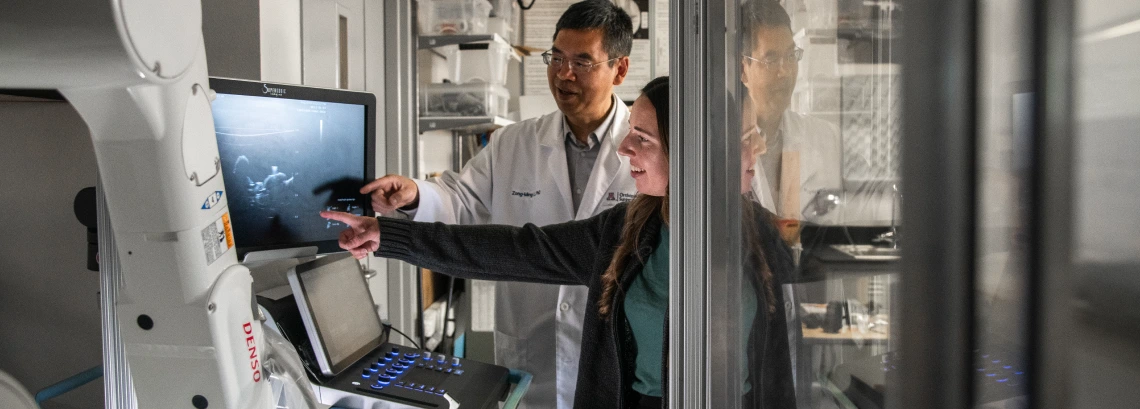Arthritis Center Associate Director Zong-Ming, Li, PhD, awarded $100,000 from the Flinn Foundation

Zong-Ming Li, PhD, associate director of the University of Arizona Arthritis Center and the William and Sylvia Rubin Endowed Chair in Orthopaedic Research, was awarded $100,000 from the Flinn Foundation to move health care products closer to market.
Dr. Li designed an effective, noninvasive therapy for carpal tunnel syndrome. His wearable device applies local force to treat nerve compression within the wrist, thus relieving symptoms including hand and arm pain, weakness, numbness and tingling.
Li, a professor of biomedical engineering and orthopaedic surgery, published his first paper on treating CTS symptoms with precise applications of force in 2009 in the Journal of Mechanical Engineering.
“Looking back, that was a landmark paper,” he said.
The American Society of Mechanical Engineers honored Li with its Savio L-Y Woo Translational Biomechanics Medal for his findings. Since that time, Li has conducted research – including clinical trials – to refine the approach and optimize a patient-friendly and cost-effective design for the carpal arch space augmentation, or CASA, device. He is working with an Interdisciplinary Capstone team of engineering students on an updated prototype variation, having sponsored two teams during the last academic year.
Li has also been working with Tech Launch Arizona, the university’s commercialization arm, to patent and commercialize the invention. He hopes to join forces with an entrepreneur to launch a company that will offer CASA as a product patients can buy for $200 or less.
The Flinn seed grant supports further research to refine the design, said Li. Once the design is perfected and approved by the Food and Drug Administration, and a company takes on its manufacturing and distribution, Li will realize his long-held goal to bring relief to the 1% to 5% of American adults affected by CTS, as estimated by the National Institutes of Health.
“Our data shows the promise,” said Li. “I’m determined that now we have to move forward and bring this to the patient.”
Source: Katy Smith
U of A College of Engineering

